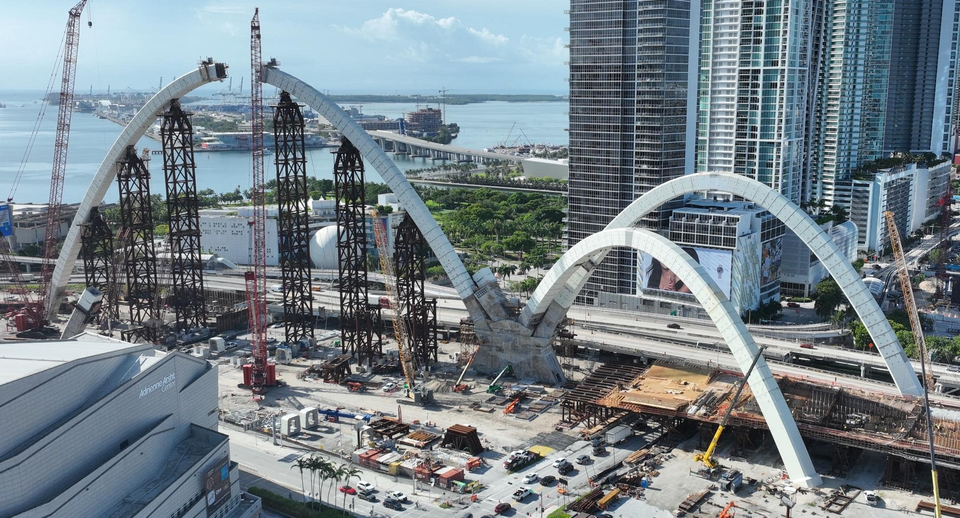FDOT: Third Arch of Controversial $840M Signature Bridge Project Nearly Finished

The Florida Department of Transportation (FDOT) has confirmed that the third arch of Downtown Miami’s Signature Bridge is nearly complete, marking another milestone in the $840 million I-395/I-95 reconstruction project. With 83 of 86 segments in place, the third of six planned arches is set to define the city’s skyline — but not without controversy.
Marketed as a future landmark, the Signature Bridge aims to blend infrastructure with art, transforming the area just north of Downtown with dramatic concrete arches. Yet critics argue that behind the sleek design lies a missed opportunity for more sustainable urban development.
The bridge is part of a larger initiative to rebuild and expand the I-395 and I-95 interchange — one of Miami's most congested corridors. FDOT touts it as a mobility-enhancing investment. However, urban planners and transit advocates point to a growing body of research warning that expanding highway capacity in urban cores often leads to induced demand, where increased capacity encourages more driving, eventually restoring congestion levels and worsening sprawl.
“Instead of solving congestion, it could just shift the problem elsewhere — while encouraging more car dependency,” said one local advocate. “That’s not the future Miami needs.”
Compounding the controversy is the project’s massive price tag. At $840 million, critics argue the funds could have instead gone toward expanding public transit, such as rapid bus networks, commuter rail connections, or bike infrastructure — all of which Miami continues to lag behind other major cities in developing.
Environmental concerns also linger. Three of the bridge’s arches are being constructed on land that once held fuel tanks in the 1920s, requiring costly environmental remediation and raising questions about long-term health impacts and land use priorities.
Despite the pushback, construction continues with full completion slated for late 2027. As the arches rise, so do broader questions: Is Miami building for its past, or preparing for its future?